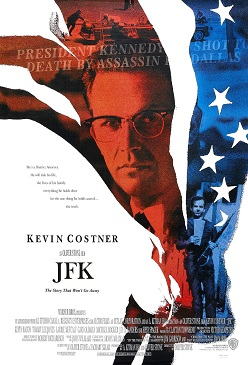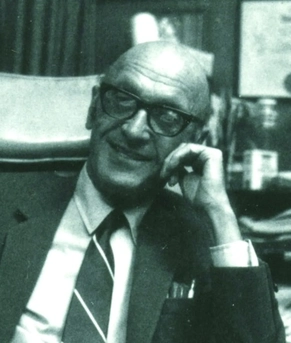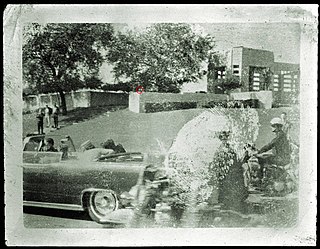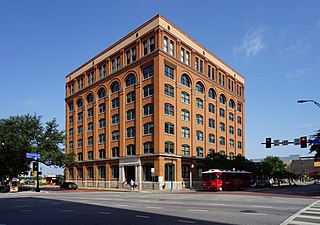
JFK is a 1991 American epic political thriller film written and directed by Oliver Stone. The film examines the investigation into the assassination of John F. Kennedy by New Orleans district attorney Jim Garrison, who came to believe there was a conspiracy to assassinate Kennedy and that Lee Harvey Oswald did not act alone.

On November 22, 1963, John F. Kennedy, the 35th president of the United States, was assassinated while riding in a presidential motorcade through Dealey Plaza in Dallas, Texas. Kennedy was in the vehicle with his wife, Jacqueline, Texas Governor John Connally, and Connally's wife, Nellie, when he was fatally shot from the nearby Texas School Book Depository by former U.S. Marine Lee Harvey Oswald. The motorcade rushed to Parkland Memorial Hospital, where Kennedy was pronounced dead about 30 minutes after the shooting; Connally was also wounded in the attack but recovered. Vice President Lyndon B. Johnson was sworn in as president later that day.

Norma Jean Lollis Hill was an American woman who was an eyewitness to the assassination of United States President John F. Kennedy in Dallas, Texas, on November 22, 1963. Hill was known as the "Lady in Red" because of the long red raincoat she wore that day, as seen in Abraham Zapruder's film of the assassination. A teacher by profession, she was a consultant for Oliver Stone's 1991 film JFK and co-wrote JFK: The Last Dissenting Witness with Bill Sloan.

Dealey Plaza is a city park in the West End Historic District of downtown Dallas, Texas. It is sometimes called the "birthplace of Dallas". It was also the location of the assassination of John F. Kennedy in 1963; 30 minutes after the shooting, Kennedy was pronounced dead at Parkland Memorial Hospital. The Dealey Plaza Historic District was named a National Historic Landmark on the 30th anniversary of the assassination, to preserve Dealey Plaza, street rights-of-way, and buildings and structures by the plaza visible from the assassination site, that have been identified as witness locations or as possible locations for the assassin.

Abraham Zapruder was a Ukrainian-born American clothing manufacturer who witnessed the assassination of United States President John F. Kennedy in Dallas, Texas, on November 22, 1963. He unexpectedly captured the shooting in a home movie while filming the presidential limousine and motorcade as it traveled through Dealey Plaza. The Zapruder film is regarded as the most complete footage of the assassination.
The Babushka Lady is an unidentified woman present during the 1963 assassination of US President John F. Kennedy who might have photographed or filmed the events that occurred in Dallas's Dealey Plaza at the time President John F. Kennedy was shot. Her nickname arose from the headscarf she wore, which was similar to scarves worn by elderly Russian women.

Mary Ann Moorman is an American woman who chanced to photograph US President John F. Kennedy a fraction of a second after he was fatally shot in the head in Dallas, Texas. The Badge Man, whom conspiracy theorists claim is one of Kennedy's assassins, is purportedly visible in another of her photographs taken that day.

The Badge Man is a figure that is purportedly present within the Mary Moorman photograph of the assassination of United States president John F. Kennedy in Dealey Plaza on November 22, 1963. Conspiracy theorists have suggested that this figure is a sniper firing a weapon at the president from the grassy knoll. Although a reputed muzzle flash obscures much of the detail, the Badge Man has been described as a person wearing a police uniform—the moniker itself derives from a bright spot on the chest, which is said to resemble a gleaming badge.

The Sixth Floor Museum at Dealey Plaza is a museum located on the sixth floor of the Dallas County Administration Building in downtown Dallas, Texas, overlooking Dealey Plaza at the intersection of Elm and Houston Streets. The museum examines the life, times, death, and legacy of United States President John F. Kennedy, and the life of Lee Harvey Oswald, as well as the various conspiracy theories surrounding the assassination.

The Dal-Tex Building is a seven-story office building located at 501 Elm Street in the West End Historic District of downtown Dallas, Texas, United States. The building is located on the northeast corner of Elm and North Houston streets, across the street from the Texas School Book Depository in Dealey Plaza, the scene of the assassination of U.S. President John F. Kennedy on November 22, 1963. The Dal-Tex Building, sometimes called the Dallas-Textiles Building, the Dal-Tex Market Building, or the Dal-Tex Mart Building, was a center of the textile business in Dallas.
Linda Kay Willis was a close witness during the assassination of United States President John F. Kennedy.
Orville Orhel Nix was a witness to the assassination of United States President John F. Kennedy in Dallas, Texas on November 22, 1963. His filming of the shooting, which only captured the last few seconds of it, but shows the grassy knoll in its entirety, is considered to be nearly as important as the film by Abraham Zapruder.
Marilyn Sitzman was an American receptionist and a witness to the assassination of United States President John F. Kennedy in Dallas, Texas, on November 22, 1963. She was with her boss, Abraham Zapruder, as he made the Zapruder film, the most studied record of the assassination.
The John F. Kennedy assassination and the subsequent conspiracy theories surrounding it have been discussed, referenced, or recreated in popular culture numerous times.

The Zapruder film is a silent 8mm color motion picture sequence shot by Abraham Zapruder with a Bell & Howell home-movie camera, as United States President John F. Kennedy's motorcade passed through Dealey Plaza in Dallas, Texas, on November 22, 1963. Unexpectedly, it captured the President's assassination.
Richard E. Sprague was an American computer technician, researcher and author. According to American journalist Richard Russell, who dedicated seventeen years to the investigation of John Kennedy assassination, Sprague was "the leading gatherer of photographic evidence about the Kennedy assassination". Sprague published his investigation in 1976-1985 as three editions of The Taking of America, 1-2-3.

The assassination of President John F. Kennedy on November 22, 1963, spawned numerous conspiracy theories. These theories allege the involvement of the CIA, the Mafia, Vice President Lyndon B. Johnson, Cuban Prime Minister Fidel Castro, the KGB, or some combination of these individuals and entities. Some conspiracy theories have alleged a coverup by parts of the federal government, such as the original FBI investigators, the Warren Commission, or the CIA. Former Los Angeles District Attorney Vincent Bugliosi estimated that a total of 42 groups, 82 assassins, and 214 people had been accused at one time or another in various conspiracy scenarios.
David R. Wrone is an American academic, author and historian. He is a professor emeritus of history at the University of Wisconsin-Stevens Point and a specialist in the fields of Native American history and political assassinations, writing books and articles on the assassinations of Abraham Lincoln and John F. Kennedy.

The three tramps are three men photographed by several Dallas-area newspapers under police escort near the Texas School Book Depository shortly after the assassination of United States President John F. Kennedy on November 22, 1963. Since the mid-1960s, various allegations have been made about the identities of the men and their involvement in a conspiracy to kill Kennedy. The three men were later identified from Dallas Police Department records as Gus Abrams, Harold Doyle, and John Gedney.

Pictures of the Pain: Photography and the Assassination of President Kennedy is a 1994 book by Richard B. Trask, an American historian and archivist based in Danvers, Massachusetts. The book compiles more than 350 photographs made by amateur and professional photographers in Dallas, Texas, during the November 1963 assassination of United States President John F. Kennedy, and includes interviews with many of the people who made the images, some of which had never been published prior to the book's release.












